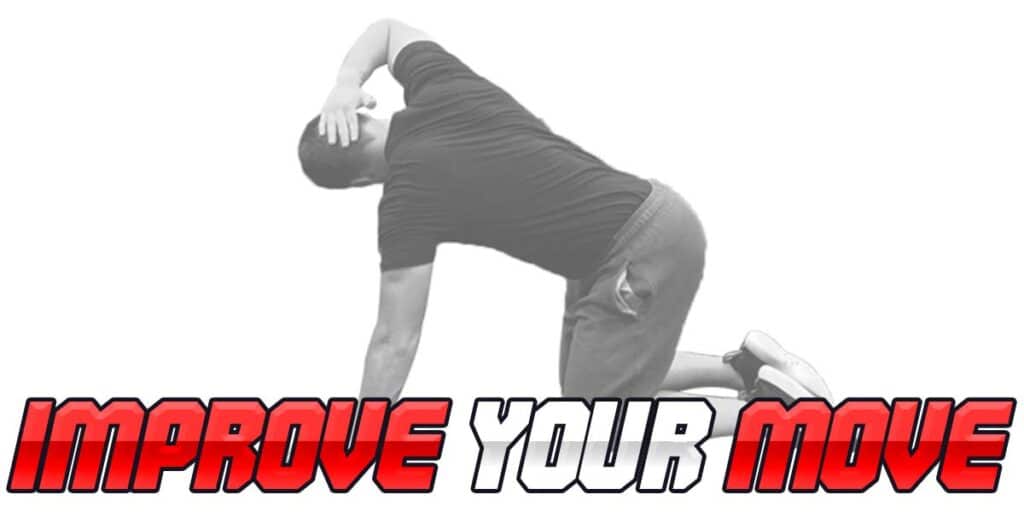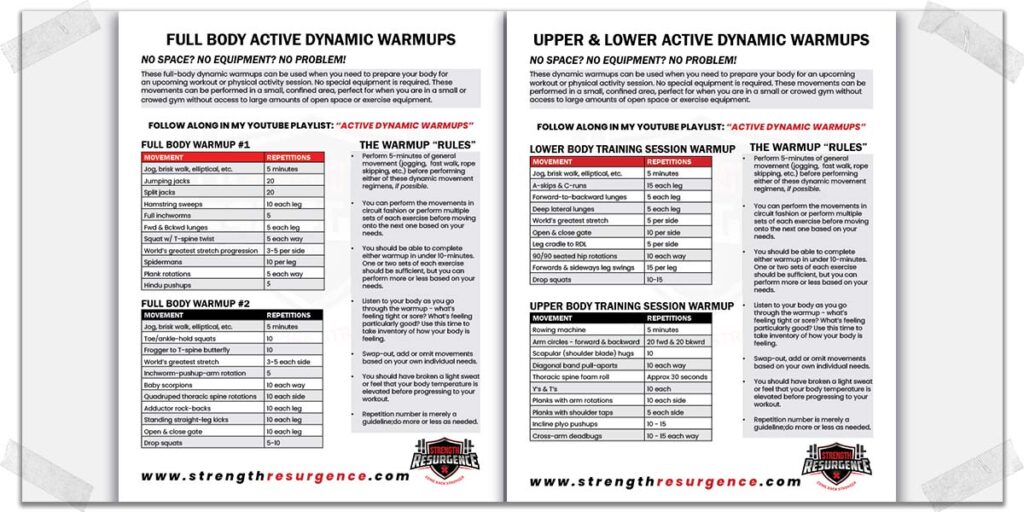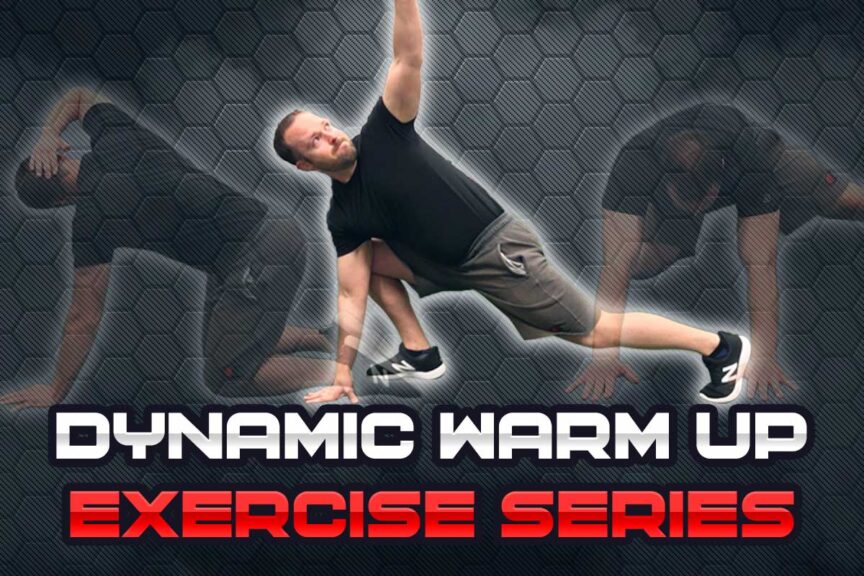If you’re an athlete or active individual, you know that the performance-enhancing benefits of a dynamic warm-up can’t be understated. If you don’t believe me, check out this article of mine that will drop some science bombs for the specifics.
This article, however, will present you with four different dynamic warm-ups that I’ve successfully used on my athletes (and myself) over the years to ensure they maximize their performance before their games, practices, or general workout sessions.
Each warm-up series follows a validated approach to an effective dynamic warm-up; you’ll start with continual low-grade movement, progress into controlled dynamic movements, and finish with quicker movements to help wake up your nervous system.
No need to beat around the bush here; let’s look at each warm-up series and when it may be best to implement each one.

Quick reminders for each warm-up series

Please keep the following bullet points of information in mind:
- If you want the FREE PDF sheet to go along with each series (it can come in quite handy), feel free to grab it over on my buy me a coffee page (don’t worry, it’s entirely free!).
- The best dynamic warm-up series is one that’s tailored to your individual needs and abilities; you are free to (and should) modify any of the following warm-ups (modify the movements, change or omit exercises, etc.).
- Your warm-up movements should never be painful. Keep any stretching sensations on the mild-to-moderate side; don’t force yourself into extreme ranges.
- You are wise for looking after yourself by investing in your movement and health—good on you!
Alright, let’s get to it.
Dynamic series 1: Full-body series #1
When to use this series
This first full-body dynamic series is ideal for any athlete or active individual who needs a series of movements that will prep all of the major muscles and joints in their body.
The series (as with all the others) starts with general, low-grade aerobic movement, progresses into large-amplitude movements and finishes with movement designed to help prepare the nervous system for the upcoming physiological demands of the training or activity session (a scientifically validated warm-up structure).
Dynamic series 2: Full-body series #2
When to use this series
This second full-body series can be used interchangeably with the first dynamic series. It serves to address the same concepts (improving muscle temperature, targeting multi-planar movements, etc.) as the first series, just with different movements.
You can also utilize this series to keep your warm-ups a bit more fresh or more engaging.
Pro tip: Don’t be afraid to swap out movements from the first series into the second series and vice versa. There’s nothing wrong with intermixing components of each series together!
Dynamic series 3: Lower-body series
When to use this series
As you might suspect, the lower-body series might be the one or choice for days where you have a lower-body dominant or exclusive workout/training session.
Of course, there’s still no harm in performing either of the full-body warm-ups on leg day; however, you may find the additional time spent purely on lower-body movement to be more beneficial. And this series will only become more effective as you refine it to better suit your particular needs or abilities.
Dynamic series 4: Upper-body series
When to use this series
In contrast to the lower-body series, the upper-body dynamic warm-up series may play into your hand on strictly upper-body training sessions.
The additional rotator cuff movements and plyometric movement can help ensure better activation of the dynamic shoulder stabilizers (rotator cuff, serratus anterior, etc.) and potentiation of the pectorals.
Throw in the benefit of the thoracic spine mobilizing movements using the foam roller, and you have an effective upper body series of movements that can help ensure you’re ready to rock and roll for what follows in your training or activity session.
Related content:
Final thoughts
Take any of these warm-up series and tweak them in ways that are best for you. As you become more familiar with each one, you’ll be able to perform them in a streamlined manner, seamlessly transitioning from one movement into the next.
From there, listen to your body and take the time to work on what may need improvement; a tight hip, an aching shoulder, etc. Your body will thank you as your risk of injuries will decrease while your performance within your activities will increase.
Alright, go warm yourself up!
Also: Thank you very much to Acumen Performance in Calgary for allowing me to use their training facility for filming my dynamic warm-up videos!

Hi! I’m Jim Wittstrom, PT, DPT, CSCS, Pn1.
I am a physical therapist who is passionate about all things pertaining to strength & conditioning, human movement, injury prevention and rehabilitation. I created StrengthResurgence.com in order to help others become stronger and healthier. I also love helping aspiring students and therapists fulfill their dreams of becoming successful in school and within their clinical PT practice. Thanks for checking out my site!

